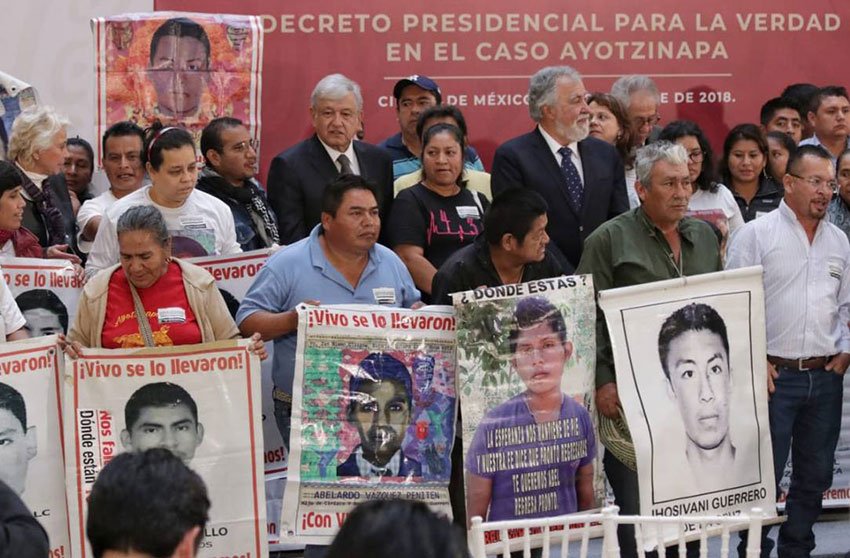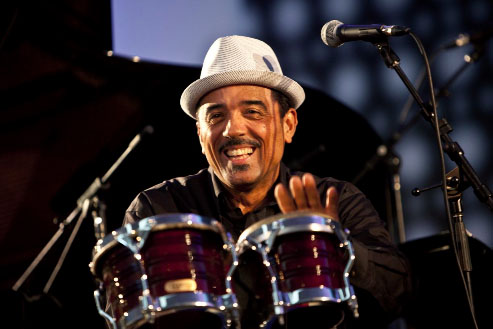Government offers 1.5-million-peso reward for information
by Mexico News Daily
Eight search operations conducted over 48 days produced no “positive findings” in the case of the 43 students who disappeared in Iguala, Guerrero, in 2014, human rights undersecretary Alejandro Encinas said on Thursday.
Speaking at the presidential press conference on the fifth anniversary of the students’ disappearance, Encinas said that the search efforts concentrated on the Guerrero municipalities of Iguala, Cocula, Huitzuco, Tepecoacuilco and Mezcala.
The operations extended across 210 different locations including a second garbage dump – the previous federal government said that the students were burned in the Cocula municipal dump, safe houses used by criminal groups in Iguala and wells in the same city, he said.
Personnel from the federal Attorney General’s Office and a forensic team from Argentina conducted the searches, Encinas said.
The undersecretary also announced that a reward of 1.5 million pesos (US $76,000) will be paid to any person who provides reliable and verifiable information about the case.
A reward of 10 million pesos (US $509,000) is on offer for information that leads to the arrest of Alejandro Tenescalco Mejía, who was the shift commander of the Iguala municipal police at the time of the students’ abduction.
According to the former government’s “historical truth,” corrupt police officers intercepted the students and handed them over to the Guerreros Unidos crime gang, who killed them, burned their bodies and disposed of their remains in a river.
However, that version of events has been widely rejected.
“The only truth,” Encinas said today, “is that there is no truth.”
As part of the search for the students, he said that authorities have analyzed 184 bodies that were found in hidden graves in Guerrero but of the 44 that have been identified, none were the young men from the Ayotzinapa Rural Teachers College.
Encinas explained that the truth commission set up by the federal government last December analyzed 80 million telephone calls, including all the calls the students made and received during a period of four years.
However, no evidence was found that the students had contact with any criminal group, he said.
Encinas added that members of the Interdisciplinary Group of Independent Experts, a team formed by the Inter-American Commission on Human Rights, began collaborating with the government on its investigation in August. The remainder of the group will join the investigation in the coming days, Encinas said.
The official also said that the government is looking at information from the Federal Police and the recently-disbanded Center for Investigation and National Security, which he claimed the prev The government will begin to summon Guerrero officials who were in office at the time of the students’ disappearance next week, Encinas said.
They include former governor Ángel Aguirre, ex-attorney general Iñaki Blanco and ex-security secretary Leonardo Vázquez.
The federal Attorney General’s Office has previously announced that it will investigate former attorney general Jesús Murillo Karam – who first announced the “historical truth” – as well as former Criminal Investigation Agency chief Tomás Zerón and former Ayotzinapa investigation chief José Aarón Pérez.
In a radio interview on Thursday, Murillo defended the veracity of the “historical truth” he first declared on January 27, 2015.
“What am I sure about in the investigation? That police handed the young men to a criminal group and a large group [of them] were burned in the Cocula dump . . .” he said.
Murillo also said that he was prepared to fully cooperate with the government when summoned to provide a statement.
Meanwhile, parents of the missing students traveled today to the Chamber of Deputies in Mexico City, where they demanded justice and the return of their sons.
“Vivos se los llevaron y vivos los queremos [they were taken alive, we want them back alive]” they shouted, a slogan that has been chanted at countless protest marches across the country during the past five years.
Source: Reforma (sp), El Heraldo de México (sp), Excélsior (sp), Milenio (sp).









